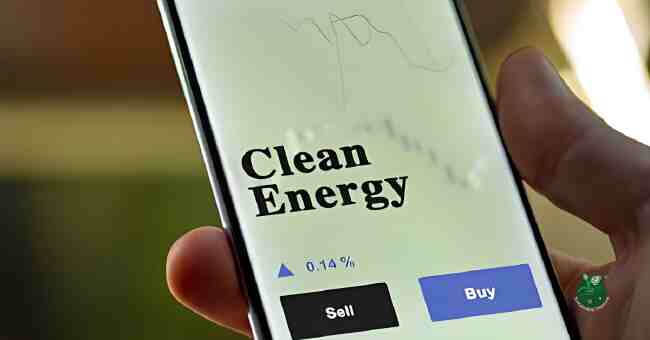Table of Contents
Are you wandering what powering the future of clean investments for battery technology will be? Yes, exciting innovations are happening in energy storage that have me geeking out.
As countries and companies work to shift electricity generation towards renewable sources like solar and wind to address climate change, energy storage solutions are becoming essential to enabling that transition.
Specifically, advancements in battery storage technology are accelerating and attracting major investments, playing a pivotal role in integrating more renewables onto power grids. In fact, some analysts project the global battery storage market will grow over 15 fold in the next 15 years into a multi-trillion dollar industry.
So in this blog I’ll explore why grid-connected battery storage, especially lithium-ion batteries, are set to transform how we produce and manage electricity across the world. Plus, what key challenges need solving for energy storage to scale up further and unlock the full potential of renewable power. Time to plug in.
Massive Investments Accelerating Innovation in Battery Technologies

Lithium-ion (Li-ion) batteries have been the dominant battery technology for consumer electronics and electric vehicles, providing high energy density in a compact, lightweight package.
Now lithium-ion batteries are increasing being deployed at grid scales to store electricity from renewable generation like wind and solar for later use when needed.
This enables smoothing out the natural intermittency of renewables and firming up capacity. Plus batteries can provide grid services for stability and peak shaving much more efficiently than traditional fossil fuel plants.
Large scale installations of lithium-ion batteries on power grids only started picking up in around 2015. But we’ve already seen surging growth, with over $300 billion in cumulative investment expected between 2020 to 2030 according to BloombergNEF.
Falling prices as production scales up is a key driver. Also, government incentives and mandates supporting energy storage additions in places like California.
However, further improvements in li-ion battery performance, lifetime, sustainability, and costs are still required for full mass adoption. This is spurring public and private research pouring over $100 billion into advancing energy storage technologies over the next decade in the U.S. alone based on announced plans!
Exciting breakthroughs in materials, chemistries, and manufacturing will unlock the next generations of high performance, durable and affordable grid-scale batteries.
Lithium-Ion Batteries Driving Clean Energy Transition
Currently over 90% of installed utility-scale battery storage capacity utilizes lithium-ion batteries. They tick many boxes – a proven technology that’s modular, efficient, low maintenance and capable of both rapid response and sustained output.
Typical grid-scale lithium-ion batteries today might use nickel manganese cobalt oxide (NMC) or lithium iron phosphate (LFP) cathode chemistries with graphite anodes, encased in weatherproof shipping containers near substations.
Impressively, prices for these setups have already dropped about 85% in this decade. Though $100-$200/kWh today, experts predict we could see under $100/kWh by 2030. That’s a key threshold enablingcost-competitiveness with natural gas peaker plants in more scenarios.
Major expansion in raw material production, manufacturing capacity, cell performance R&D, and recycling programs will support further lithium-ion usage growth to hit multi-terawatt hour scalein the coming years.
Emerging Battery Chemistries Offering Promising Alternatives
Beyond lithium-ion batteries, some emerging chemistries getting attention include:
- Zinc batteries – Cheap, safe, with potential for longer cycle life but lower energy density
- Sodium sulfur batteries – Operate at high temperatures with fire safety risks needing advanced management
- Flow batteries, like vanadium flow batteries – Separate storage of electrolyte fluids from cell stacks enable flexible scaling of capacity for long duration storage
- Solid state batteries – Replacing liquid electrolytes with solid ion conducting ceramics or polymers can boost energy density, efficiency, safety and remove dendrite risks
- Iron flow batteries – Utilize cheap, abundant iron electrolytes instead of limited materials like vanadium
Each alternative battery type has pros and cons versus lithium-ion. Researchers continue improving their own technical capabilities and economics for targeted applications.
Industry experts actually project lithium-ion still leading utility-scale installations in the next decade. But flow batteries, zinc batteries and solid state batteries in particular seem well positioned to grab larger market share in the longer term, especially for long duration energy shifting needs.
Grid-Scale Batteries Enabling High Renewable Penetration
With renewable electricity generation expanding rapidly, effectively integrating higher variable supply requires more flexible grids. Battery storage is a hugely valuable tool for grid operators to balance supply and demand in real-time.
Let’s look at some of the core capabilities battery storage brings for enabling renewable growth and grid modernization:
Smoothing Renewable Intermittency and Stabilizing the Grid
Wind and solar generation fluctuates based on weather conditions. So as renewable penetration increases, so does the ramping requirements placed on the rest of generation fleet – which worsens inefficiency, wear & tear, and reliability risks.
Using battery storage strategically to firm up renewable capacity can mitigate this issue. For example, charging thebatteries during peak renewable output allows capturing excess generation rather than curtailing it. The stored power can then discharge during lulls to smooth overall profile at the grid connection point.
Batteries also excel at rapidly injecting or absorbing power, providing essential grid stability services likes frequency regulation – automatically counteracting tiny deviations from 60 hertz that destabilize AC current.
Their fast response outcompetes traditional providers like fossil fuel plants, plus batteries remain highly efficient even during frequent charge/discharge cycles or idle standby this requires. Overall this enables grids to handle higher renewable inputs without compromising stability.
Providing Essential Grid Services More Efficiently
In addition to smoothing and frequency regulation, battery storage offers superior peak shaving capabilities to flatten spikes in electricity demand as well.
Discharging batteries during peak hours reduces reliance on firing up expensive and carbon-intensive fossil fuel “peaker plants” which otherwise only run for short bursts.
Batteries also help electricity users reduce costly peak demand charges. By strategically charging when demand is low then discharging locally during periods of peak pricing, commercial users especially can cut their maximum demand levels substantially to save big on bills.
Plus battery inverters have inherent capability for reactive power support at near unity efficiency. Helping voltage and power factor regulation without wasteful losses seen in traditional capacitor banks or synchronous condensers.
Behind-the-Meter Storage Supporting Clean Electrification
“Behind-the-meter” refers to energy storage sited locally at end user premises rather than larger utility-scale sites. This includes batteries integrated with distributed solar installations on homes, businesses, and even entire communities with microgrids. Behind-the-meter storage unlocks additional ways to cut emissions while empowering consumers.
Optimizing Clean Energy Use for Homes and Businesses
Combining rooftop solar with batteries allows households and companies to store excess renewable generation for later self-consumption when solar isn’t actively producing.
This increases utilization of the clean energy generated on-site vs exporting back to grid, reducing reliance on dirtier grid power to meet evening/nighttime demand especially.
Intelligent controls can automate charging/discharging to maximize bill savings too, by leveraging multi-tiered TOU pricing and demand charge management strategies described earlier.
Integrating More Distributed Renewable Generation
Behind-the-meter storage also facilitates safer, more reliable connection of renewable systems to the distribution grid. Batteries help mitigate issues like back-feeding and voltage/frequency disturbances that can arise from intermittent generation sources left unchecked and which scale in impact with higher distributed energy penetration.
Allowing smooth, well-managed integration of more rooftop solar supports decarbonization and consumer choice for localization – without undermining overall grid operations.
Some project even greater expansion of behind-the-meter batteries enabling aggregated “virtual power plants”. Where grid operators access fleets of distributed batteries linked via cloud connectivity for load balancing services at scale similar to utility-assets. Unlocking this flexible distributed energy resource potential is an emerging priority across the industry.
Key Challenges to Scale Up Energy Storage
Clearly batteries provide great value to renewable integration and reliable, sustainable grid management already. However there remain important improvement areas to scale up global storage capacity further. Let’s examine the core issues:
Improving Performance and Lifetime of Batteries
While lithium-ion formulations have advanced tremendously for consumer devices, most still degrade noticeably over a few years with daily cycling. Grid usage patterns impose very frequent charging and discharging that accelerates wear.
Since battery degradation determines working lifespan, improving cycle performance could double or triple duration from the typical 5-10 year window seen currently before requiring replacement. This reduces lifetime costs and environmental impacts.
Battery safety also needs enhancement. Thermal runaway causing fires remains a concern needing fail-safes. Software and hardware solutions better preventing unsafe conditions propagating via cell balancing techniques offers an active area of research.
And at low temperatures, charging capacity and power delivery drops noticeably for many chemistries – an issue in cooler climates. Improving cold weather resiliency ensures reliability.
Developing Sustainable Battery Supply Chains
Beyond technical battery improvements, responsible natural resource mining, chemical processing, and battery manufacturing carries both ethical and environmental considerations too as deployments grow globally.
Issues around water usage, waste management, greenhouse gas emissions, recyclability and labor policies throughout these supply chains requires attention from industry leaders to ensure growth doesn’t exacerbate sustainability issues.
Investing in circular lifecycle processes can help by increasing recycling rates and enabling battery reuse in less demanding second-life applications before material recovery and reprocessing. Continued efforts improving recycling and material efficiency over time minimizes risks from increased lithium, cobalt, nickel demands.
Research around potential substitute components like manganese, iron or even aluminumINFRINGEMENT mineral compounds offers alternate avenues minimizing future supply constraints for key building blocks like lithium too.
Grid Infrastructure Investments Must Accelerate As Well
While batteries themselves enable managing higher renewable penetrations, fully unleashing their potential requires broader grid upgrades too for seamless integration. Key priorities span:
| Grid Infrastructure Priority | Details |
|---|---|
| Upgrading Transmission Networks | Expanding transmission capacity alleviates grid congestion allowing smoother power transfers from renewables hubs to demand centers. Ultra high voltage DC links enable efficient long distance transfer too. |
| Distribution Grid Reinforcement | Handling higher bidirectional loads from distribution-connected batteries and distributed renewables requires cables, transformers, voltage regulation and other field assets enabling greater flexibility. |
| Interconnection Process Streamlining | Expediting review procedures and establishing technical requirements and compensation structures accelerates distributed energy resource interconnections essential for growth. |
| Market Structure Redesign | New ancillary services, improved dispatch coordination, and compensation for battery services better reflects their capabilities and benefits while incentivizing optimal usage. |
Already, over $100 billion per year gets invested into domestic grid infrastructure as is in the United States. But considerably more public and private capital must continue flowing to enhancephysical equipment and back-end systems if we wish to run a predominantly renewable supply in future.
Regulatory initiatives around grid modernization and interoperability will help guide necessary upgrades and cost recovery while enabling cleaner, consumer-empowered energy systems.
FAQs


What Is The Future Of Battery Technology?
The future of battery technology is extremely promising. Lithium-ion batteries currently dominate energy storage applications from electric vehicles to the power grid. But intensive R&D focuses on improving lithium-ion performance and lifetime even further, while exploring alternative promising chemistries for niche use cases or eventual mass market viability.
Some key developments analysts foresee include solid-state lithium-ion cells with 2-3X higher capacity and increased safety entering markets around 2025. Continued improvements in lithium nickel manganese cobalt oxide (NMC) and lithium iron phosphate (LFP) cathode formulations as well. Plus advances in anode materials like silicon graphene mixes with 10X capacity potential still on the horizon.
Flow battery chemistries are also making strides for long duration utility-scale storage needs thanks to flexibility advantages in scaling storage capacity separate from power rating. As are lithium sulfur formulations offering high theoretical capacity for aviation applications. Even sodium-ion and aluminum-ion alternatives get attention as potential sustainable substitutes limiting lithium resource constraints.
Overall, expect exciting battery innovations the next couple decades accelerating clean energy commercialization across sectors!
What Battery Technologies Are Key To Renewables?
Lithium-ion batteries stand out as most pivotal currently for enabling greater renewable energy integration thanks to their proven performance, safety and lifespan at scale for grid storage applications. Falling prices also make them increasingly cost competitive with fossil fuel peaker plant alternatives.
In particular, lithium iron phosphate (LFP) formations provide very long cycle life and thermal stability suitable for frequent charge/discharge cycles required in grid services and behind-the-meter installations with rooftop solar. While lithium nickel manganese cobalt oxide (NMC) offers higher energy density where space constraints exist like electric vehicles.
Flow batteries utilizing vanadium and zinc-bromine electrolytes show advantages for longer duration utility backup needs as well. Their storage/power decoupling via external electrolyte tanks enables flexible capacity scaling. Continued flow battery innovations around membrane materials, pumping systems and stack components improves economies here.
Solid state batteries replacing liquid electrolytes with solid ion conductors also make strides lowering costs through simpler cell fabrication while improving energy density and safety – ideal for sustainable transportation.
What Battery Technology Will Replace Lithium-Ion?
While further lithium-ion refinements roll out in coming years, most experts don’t expect it totally replaced as the dominant chemistry anytime soon thanks to continued promise enhancing performance and sustainability.
However around the 2030s, advanced solid state lithium-ion designs seem poised to steal market share with their huge energy density, power, safety and cost advantages promised once implemented at scale. Eliminating liquid electrolytes and dendrite formation risks via ceramic conduits accelerates storage innovation in this space.
After 2030, rechargeable lithium sulfur and lithium air batteries stand out as contenders offering order of magnitude improvements, at least theoretically, for aviation and vehicle electrification if their cycle life challenges get addressed via catalysis and containment innovations. Sodium ion and multivalent ion chemistries are lower risk options but likely supplementary not directly displacing lithium technology.
While not direct replacements, continued development around flow battery chemistries will also unlock longer duration large scale storage growth opportunities complementary to lithium’s strengths elsewhere.
What Is Smart Battery Technology?
Smart battery technology refers to battery systems with integrated computational monitoring, control and optimization intelligence for more efficient, reliable and safer operation. This spans battery management systems at the cell level up to server-based fleet optimization software managing entire grid storage assets remotely via cloud analytics.
Key capabilities span accurately tracking battery state to prevent overcharge/discharge and optimize lifespan, conducting automatic cell balancing for uniform use avoiding hot spots, and implementing early failure detection minimizing safety issues. Some smart battery platforms also improve solar self-consumption in behind-the-meter storage by forecasting local generation/load patterns and recommending adaptive charge/dispatch schedules. Finally aggregating many battery assets into virtual power plants allows smart coordination of distributed capacity for grid support.
As battery storage scales globally, purpose-built intelligence enabling more autonomous, resilient and grid-integrated functionality proves essential. Expect smart battery technology innovation accelerating thanks to AI/ML advancement!
What Is The Best Battery For Renewable Energy?
For grid energy storage supporting renewable integration specifically, lithium-ion batteries dominate currently thanks to proven performance meeting demands of rapid response firming, short term smoothing and ancillary services provision for stabilizing grids with high renewable penetration.
Lithium iron phosphate (LFP) chemistry offers very long cycle life, safety and low cost ideal for frequent charge/discharge cycles in grid use cases. While lithium nickel manganese cobalt oxide (NMC) provides higher capacity where space is limited. Scale manufacturing streamlines lithium-ion deployment further as global storage capacities grow into the tens of terawatt hours range.
Alternate promising chemistries for renewable energy storage include flow batteries around vanadium, zinc-bromine and iron electrolytes. Their external storage tank designs allow independent scaling of capacity for long duration discharge capabilities smoothing multi-day wind and solar intermittency.
Solid state batteries are also on the horizon offering higher energy density, wider temperature operation and safety improvements – though higher upfront costs slow adoption currently. Overall experts see lithium-ion dominating still over next decade, with alternatives filling niche needs.
What Battery Did Elon Musk Invent?
While renowned as CEO of electric vehicle maker Tesla which utilizes lithium-ion battery packs, Elon Musk actually holds personal patents around an alternative rechargeable battery chemistry involving electrolytic aluminum processing which he filed directly back in 2019.
His conceptual design outlined utilizing commodity aluminum as the anode, a molten salt electrolyte suspension, and a cathode structure maximizing surface area for low cost, safety and rapid charging potential. Media sources revealed Musk was doing personal late night experiments around this concept as well to validate feasibility.
It’s unclear whether Musk intends his aluminum-ion battery patent as a directly commercializable challenger to mainstream lithium-ion incumbent technology which Tesla itself leverages. Or simply staking intellectual property claims around an alternate chemistry showing theoretical promise meeting his teams aggressive cost targets long term, but which requires extensive further applied R&D to develop towards manufacturing scale.
Regardless, Musk spearheading battery innovations comes as no surprise given his track record disrupting multiple industries over past decades! The renewable energy storage domain stands ripe for continued breakthroughs.
What Is The New Battery From Nasa?
NASA recently unveiled an innovative Sulphur-Iodine based battery chemistry their researchers have been developing, which promises to address key capability gaps holding back electric aviation advancement currently.
Capable of 400Wh/kg energy density when scaled up commercially, NASA’s patented Sulphur-Iodine battery leverages iodine’s rapid transport properties within a ceramic ion conductive membrane, while utilizing low cost sulphur for increased theoretical capacity surpassing lithium-ion limits. The new chemistry tolerates extremely high current pulses too enabling rapid charging functionality.
After demonstrating success powering a small drone initially, NASA now targets maturing the technology for broad commercialization across the emerging electric aircraft industry. The lightweight batteries not only slash operating costs for air taxis and regional commuters through elimination of jet fuel. But longer term, their high specific energy density also poses viability for electrifying larger commercial airliners as well – which remains severely energy constrained currently by lithium technology limits.
Through advanced in-house R&D coupled with external partnerships, NASA aims catalyzing a new era of sustainable aviation leveraging US leadership in aerospace technology!
What Is The Best Battery For The Future?
Given their dominance across current storage solutions coupled with continual improvements ahead in performance, costs and sustainable manufacturing processes, most industry analysts foresee lithium-ion batteries leading global deployments over the next 10-15 years even as alternatives emerge situationally. Hence lithium-ion likely remains the best all round battery choice near term.
However solid state lithium batteries without liquid electrolyte drawbacks could begin displacing conventional lithium-ion formulations before 2030 – offering step change improvements in capacity, power, lifespan, safety and operational temperature ranges thanks to inherent advantages of solid ion conductors replacing porous separators.
Longer term after 2035, advanced lithium sulfur chemistries hold promise eclipsing lithium-ion on cost and sustainability metrics potentially – if cycle life challenges get solved. Sodium ion and multivalent batteries pose safer and cheaper options as well, albeit likely supplementing rather than replacing lithium dominance outright.
Ultimately a diversity of improved storage solutions will continue gaining footing in suitable niches for certain applications. But lithium innovations have strong momentum behind them to remain the best all-round battery technology for future grid decarbonization needs over coming decades.
The Future of Battery Storage is Bright
I hope this glimpse into the integral role of batteries powering wider clean energy transitions gives a sense of why I’m so enthusiastic about the space! Tremendous investments and innovations today in storage technology along with renewable generation and modernized grid capabilities are laying groundwork for a more sustainable energy future.
Projections suggest the global utility battery market alone could grow over 15 times in next 15 years into a multi-trillion dollar industry as countries pursue decarbonization. By enabling very high renewable penetration, batteries are set to transform power grid infrastructure worldwide into intelligent, efficient and resilient systems. Exciting times ahead!
What emerging battery innovations or grid modernization trends are you most looking forwards to? Let me know your thoughts in the comments section below!
Image: Credit Istock



